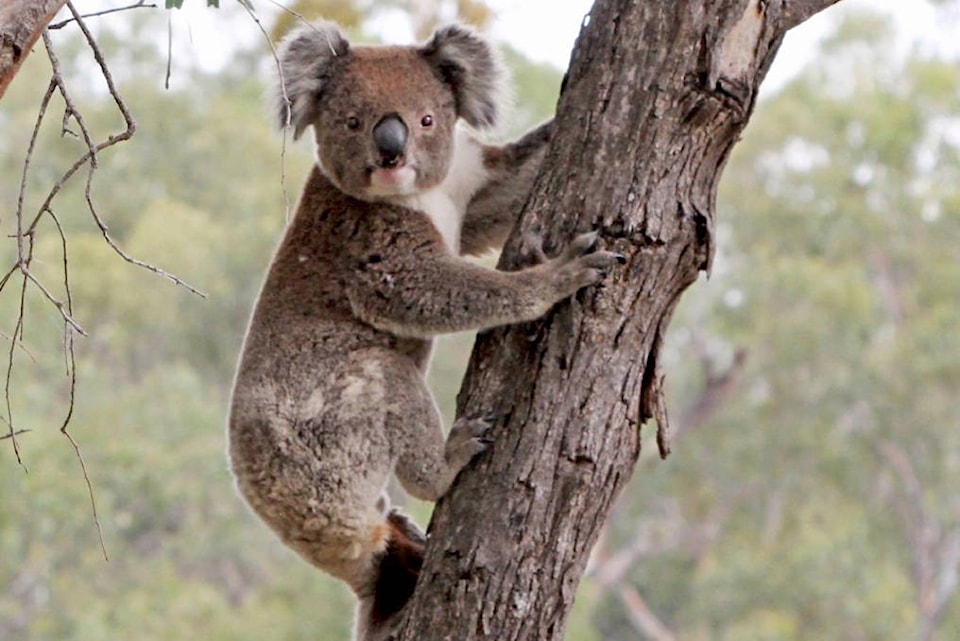By David Clements
Since late December I have found myself in a land down under. I’m on sabbatical here in Australia, engaged in a research project on a global invasive weed, mile-a-minute with my colleague Leslie Weston and her team at Charles Sturt University in Wagga Wagga.
So I didn’t exactly come here to study marsupials, but my wife and I have already made many forays to seek out unique Australian creatures.
One of our most memorable expeditions was to the Narrandera Nature Reserve where a handful of koalas were reintroduced to the Eucalyptus forest there back in 1972. The site now boasts a population of over 200.
That afternoon as I ventured into the forest, I kept scanning the tall Eucalyptus trees along the Murrumbidgee River with binoculars, hopeful, but after a while I despaired of seeing any.
Then I saw a movement in the forest. Suddenly they burst out of nowhere a few meters in front of me. Two swamp wallabies bounding through the forest…beautiful creatures!
Just a few minutes later, with my heart still racing from the wallaby encounter, there it was. Just a few meters away, a koala on the ground. It clambered up a small tree and I breathlessly snapped the photo that appears here. Crikey!
As I stared dumbfounded into the eyes of this fair fellow creature, it was hard to believe the sorry history koalas have had with humankind.
The Australian aborigines utilized koalas for food, but healthy populations existed throughout the continent until the arrival of Europeans in the 1700s. Thereafter deforestation consumed large areas of koala habitat, and the animals were hunted for their pelts with millions shot up to the 1930s.
Fortunately by 1927, there was a worldwide outcry over the potential disappearance of koalas and President Roosevelt made a law against possessing koala fur in the U.S.
Since then, many initiatives have been made to protect koalas. However, with their populations relatively small and fragmented, koalas are suffering from low genetic diversity.
The University of Adelaide’s Corey Bradshaw told Wild magazine: “Obviously reforestation in certain areas would help immensely, but first the genetic diversity issue must be addressed and this will require introducing a number of healthy individuals from genetically distinct populations. Until that happens, the entire species is at risk of total extinction in the wild over the course of the next 50 to 100 years.”
Indeed, I hope efforts to keep these animals in our world are successful. Take it from me, seeing one in the wild like I did is…unforgettable.
David Clements, Ph.D. is Professor of Biology and Environmental Studies at Trinity Western University
Like us on Facebook and follow us on Twitter
